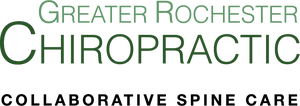Nobody can treat the injured shoulders of an athlete the way a chiropractor can. The shoulder joint is one of the most commonly injured parts of the body, due to the incredible capacity of
movement the shoulder can perform; it is also the only body part completely supported by its own musculature.
As a result, muscle balance plays a very important role in the life of a healthy shoulder, and it is necessary to understand the mechanics and function of nerves and circulation, which are
often neglected by physicians and their patients - especially athletes.
There are many cases in which the patient complained, prior to treatment, about not being able to raise his or her arm above shoulder level, sometimes for several years' duration, because the
shoulder pain was too great. After each treatment, the patient was usually able to raise the arm 10 percent more than the previous time, and with the proper exercises, the improvement was
steady and lasting.
An understanding of proper training also becomes critically important for the shoulder injury - knowing which exercises help and which cause more problems. Most intriguing is the process by
which different shoulder injuries respond positively and negatively, almost in the same way. In other words, there are exercises that cause problems and aggravate an injury most of the time;
the rehabilitation exercises have to be more specific. Recognizing the bad ones and explaining to the patients not to perform them is easy; finding exactly what will rehabilitate, and as fast
as possible, is the hard part.
Take, for example, the shoulder of an athlete who trains in different sports. Commonly, the shoulder's muscles are strong, but imbalanced; I have never met an athlete who has balanced
muscles. In my opinion, a shoulder injury happens because of the imbalanced muscles, developed during training; not because a muscle is too weak or too strong. When faced with a shoulder
injury in an athlete, I recommend the following:
The shoulder should not be exercised until it is examined and the cause is determined.
If the shoulder is swollen or inflamed, ice must be applied.
Determine what is injured, e.g., muscle ligaments, muscle tendons or bursa, or if the injury is in the bicipital groove or coracobrachialis (two common areas of injury). If a ligament or
muscle tendon tear is presumed to be the cause of the injury, the patient has to be referred to an orthopedic doctor for possible surgery.
Muscles are also very important for the shoulder joint, as well as the glenoid cavity, which is slightly concave and allows the head of the humerus to "glide" in and out. The strong, balanced
shoulder muscles help keep the head of the humerus properly in place in the glenoid cavity.
Powerlifters and bodybuilders have a common shoulder problem: Their pectoralis major musculature is usually too strong, causing the arms to overrotate medially. Also, the teres major
(functioning in opposition to the muscles comprising the rotator cuff) contributes to this problem.
To counteract, we must reduce the spasm of the pectoralis major and the teres major, and train the infraspinatus and teres minor with weights to provide balance. Treatment progresses in this
order:
Restore the nerve supply from the cervical plexus.
Work on the pectoralis and teres major, performing acupressure right at the center of these two muscles, to relieve the spasm.
Discontinue any exercise that aggravates most shoulder problems: sitting presses, shrugs, chest exercises and biceps exercises. The reason for stopping sitting presses is that many shoulder
problems are aggravated by having overgrown upper trapezius muscles, which reduce the nerve supply, and even more importantly, reduce the blood supply to the shoulder and the entire arm. Most
athletes, including trainers, believe that sitting presses are for strengthening the deltoid muscles; this is partially true for the front deltoid, but mainly, this type of press benefits the
upper trapezius. Consequently, this exercise is contraindicated with a shoulder injury.
Healing takes place when the nerve and blood supply are restored.
How long will the healing take? Giving patients the chance to participate in their own healing experience, by recommending exercises to perform at home or at the gym, makes them feel a little
bit better right away, but generally, the shorter the treatment duration, the better - for the patient and the doctor.
